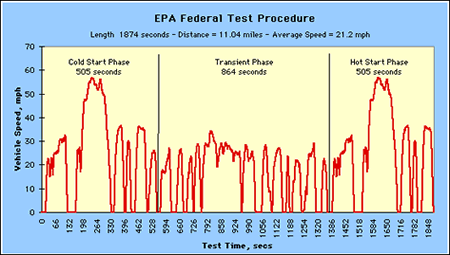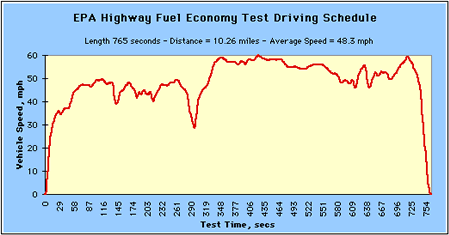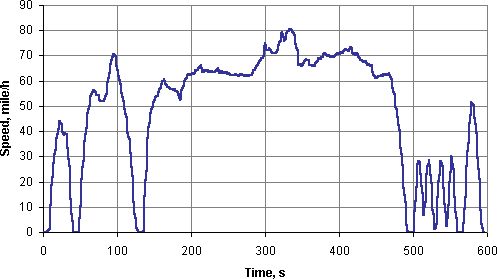The EPA fuel economy test consists of two driving routines, or schedules, performed in the laboratory.
City: Represents urban driving, in which a vehicle is started with the engine cold and driven in stop-and-go rush hour traffic. The driving cycle for the test includes idling, and the vehicle averages about 20 mph.
Highway: Represents a mixture of rural and Interstate highway driving with a warmed-up engine, typical of longer trips in free-flowing traffic. Average test speed is about 48 mph and includes no intermediate stops or idling.
The city schedule represents low-speed driving in stop-and-go traffic and considerable idling.

The highway schedule simulates non-metropolitan driving at higher speeds, with no stops and negligible idling. 
Test Schedule Characteristics Driving Schedule AttributesTest Schedule
City ! Highway
Trip TypeLow speeds in stop-and-go urban traffic ! Free-flow traffic at highway speeds
Simulated Distance11 miles ! 10 miles
Time31 minutes ! 12.5 minutes
Average Speed20 mph ! 48 mph
Top Speed56 mph ! 60 mph
Stops23 ! None
Idling time18% of time ! None
Engine Temp. at Startup*Cold ! Warm
Lab temperature68-86 ºF
Vehicle air conditioningOff
* A vehicle's engine doesn't reach maximum fuel efficiency until it is warm.





 Reply With Quote
Reply With Quote














